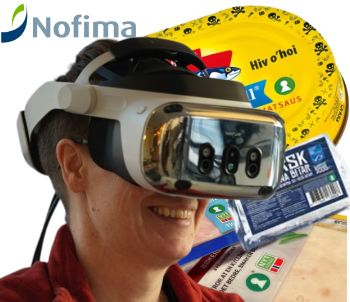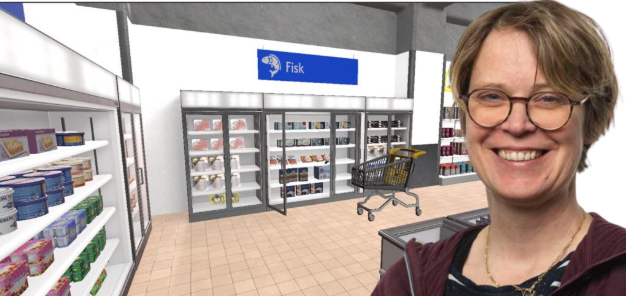|

Scientist Kamilla Bergsnev with the Varjo XR-4 VR glasses
Sustainability Takes a Back Seat: Young Norwegians Choose Seafood by Taste and Habit
 NORWAY
NORWAY
Tuesday, February 11, 2025, 02:30 (GMT + 9)
A Nofima study using virtual reality (VR) technology explored young adults' seafood purchasing habits, revealing a disconnect between their stated sustainability concerns and actual product choices.
Researchers tracked eye movements and emotional responses of 18 participants (aged 18-35) as they "shopped" for seafood in a virtual Norwegian supermarket.
Results indicated that taste and existing habits were the primary purchase drivers. Salmon, trout, and Norwegian cod were most popular, while pickled herring was universally avoided. Eye-tracking data confirmed that participants focused on brand, origin (e.g., "Norwegian"), and product image, rather than sustainability labels, including the MSC label (even when enlarged).

This is what the VR grocery store looks like. On the right , Nofima's scientist Kamilla Bergsnev. Photo: Nofima
"Cooking skills and familiarity play a significant role," says researcher Kamilla Bergsnev. "Many find salmon and trout easier to prepare, likely influenced by extensive advertising."
Price, though not displayed in the VR store, was a key consideration in post-VR interviews. Many participants, particularly students, cited cost as a barrier to sustainable choices and believed sustainable options are generally more expensive. While most expressed concern about origin and perceived Norwegian products as more sustainable, they often chose farmed salmon or trout, citing the difficulty of finding wild-caught alternatives. Concerns about fish farming practices and ultra-processed seafood were also noted. Reducing food waste was frequently mentioned as a way to live more sustainably.
Health was a factor for about half the participants, and most expressed a desire to consume more seafood. However, many felt frustrated and hopeless when trying to align their purchases with their values, citing conflicting information and a lack of clear understanding about sustainable seafood. They desired more visible and reliable sustainability information on packaging, preferably from government sources rather than commercial entities. Despite this, awareness of existing labels like MSC was low, with most recognizing only the "Nøkkelhull" and "Nyt Norge" labels.

Cabinet with seafood products in the VR grocery store. Photo: Nofima
"Participants want to choose sustainably but find it difficult," Bergsnev explains. "They distrust commercial labeling and have more faith in authorities." While the study's findings may not be generalizable to all young adults, they highlight a potential gap between stated values and actual purchasing behavior.
The study demonstrates the potential of VR technology for detailed market research, providing insights into consumer behavior that are difficult to obtain in traditional settings. Researchers can observe shopping patterns, eye movements, and emotional responses, offering a more nuanced understanding of purchasing decisions.
[email protected]
www.seafood.media
|



